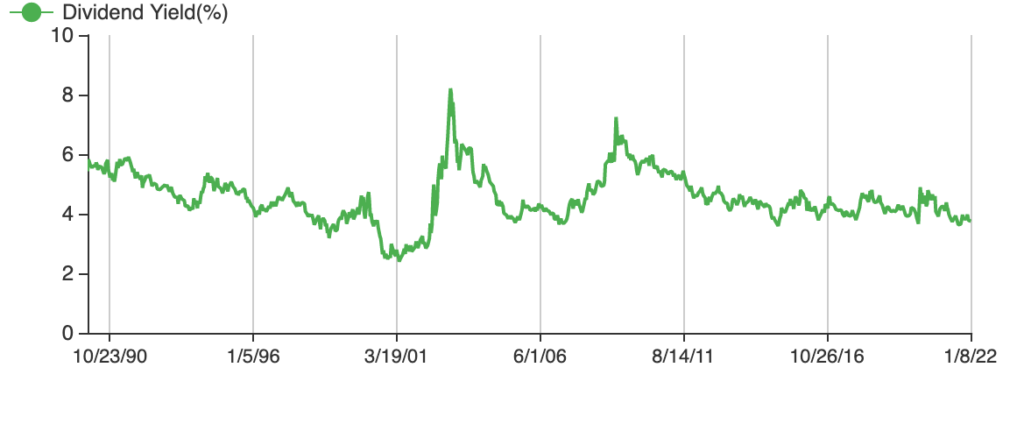Inflation and dividends don’t get along.
If you’re living on a fixed income and the money coming in isn’t growing at least as fast as rate of inflation, you get poorer every year. The purchasing power of your dividend stocks shrinks.
Some investors try to combat rising costs with higher current yield — but that’s an easy trap to fall into.
Instead, look for growing dividends. And a super simple equation can help you find the best investments to carry you through retirement and any inflation situation.
The Problem With High Dividend Yields and Inflation
A lot of investors make the mistake of focusing on current yield alone. High yields of 5% to 7% look great at first, but the purchasing power of that investment will decrease in value with every passing year due to the sandpaper effect of inflation.
So you want things that pay a respectable yield today. You could even accept a lower yield than what you might consider, so long as there’s growth.
We’re not talking about capital gains. (Those are also nice, of course.)
We’re talking about the actual dividend. We want dividend stocks that increase that payout every year.
Yield on Cost: Your Inflation Secret Weapon
This brings us to the concept of yield on cost.
The equation is simple: Just divide a stock’s current dividend by the price you paid. The yield on cost for a stock paying out $5 per share that you bought for $50 per share has a yield on cost of 10%.
5 ÷ 50 = 0.1 or 10%
It gives you a nice snapshot of what the stock has been capable of in the past, which you can use to inform your future decisions about your investment.
One thing to keep in mind: Yield on cost takes the dividend today and divides it by your original purchase price, however long ago — from one year ago to infinity years ago.
The share price could have gone up, down or sideways — that’s not relevant if we’re just buying a stock for the income stream. But that gives you a good indication of kind of what that growth has been like.
Two Dividend All-Stars
Let’s look at some examples — dividend stalwarts, if you will. We’ll look at a blue-chip utility stock and a blue-chip REIT to get the lay of the land here.
Duke Energy Corp. (NYSE: DUK) is a portfolio that should be familiar to any income investor. It’s one of the largest utility companies in the world, and it’s a good dividend payer.
Duke’s Steady Dividend

Realty Income Corp. (NYSE: O) is also an excellent dividend payer. It’s been around forever, and it’s a very conservative retail. They own things like convenience stores, gas stations, things like that.
Both these companies today pay very comparable yields. So how can we use yield on cost in our assessment here?
Where to Find Us
Coming up this week, Matt will have more on The Bull & The Bear podcast, so stay tuned.
Don’t forget to check out our Ask Adam Anything video series, where chief investment strategist Adam O’Dell answers your questions.
You can also catch Matt every week on his Marijuana Market Update. If you are into cannabis investing, you don’t want to miss Matt’s weekly insights.
Remember, you can email my team and me at Feedback@MoneyandMarkets.com — or leave a comment on YouTube. We love to hear from you! We may even feature your question or comment in a future edition of Investing With Charles.
To safe profits,
Charles Sizemore
Co-Editor, Green Zone Fortunes
Charles Sizemore is the co-editor of Green Zone Fortunes and specializes in income and retirement topics. He is also a frequent guest on CNBC, Bloomberg and Fox Business.







